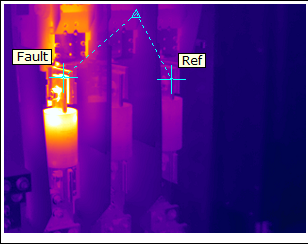He Followed NFPA 70E® — That’s Why He Went Home Safe
- Jeff Kershner

- Aug 18, 2025
- 2 min read
Real story. Real risk. The right precautions made all the difference.
We buckle our seatbelt not because we expect to crash, but because it’s the smart thing to do—just in case. The same mindset applies to electrical safety. You wear PPE not because you know something will go wrong, but because it might.
This real-life story from a Guidant Power customer is a powerful reminder: when procedures are followed and PPE is worn, the difference can be life or death.
It Looked Like a Routine Task — But Danger Was Lurking
At this fast-paced facility, crews were installing new loads downstream of existing switchgear. A new sub-breaker had been added, feeding conductors that ran through a junction box and eventually to the new equipment.

One worker was assigned to energize the sub-breaker. Before doing so, he reviewed the arc flash label, donned the required PPE, and followed the facility’s procedures.
Then came the surprise.
As he closed the sub-breaker, a violent arc flash erupted inside the breaker cubicle. The switchgear’s main breaker tripped near instantaneously, clearing the fault.
The source of the problem? Not in the breaker, but downstream—in a junction box. But the arc flash still occurred right at the sub-breaker during energization.
(See diagram below)

Why It Happened — And Why It Didn’t End Worse
The fault didn’t originate in the switchgear, but the energy traveled through the system. Because the installation wasn’t done properly, the system failed at its weakest point—right where the worker stood.
Even if he had known about the downstream issue, he never could have predicted an explosion in the sub-breaker cubicle. Fortunately, he didn’t need to guess. He had protection.
According to NFPA 70E® 2024, Table 130.5(C), energizing a breaker for the first time after installation or maintenance does carry a likelihood of arc flash—regardless of operating condition. That’s why the task required full PPE.
And that’s why he walked away unharmed.
Lessons Learned
Arc flash risk is real—even when it’s not where you expect it.
New installations carry increased risk—especially during first-time energization.
PPE and procedure aren’t optional. They’re lifesaving.
When electrical incidents happen, they happen fast. This time, no one was hurt—because someone followed NFPA 70E® and trusted the process.
If you’re responsible for worker safety, don’t leave it up to luck. Make sure your teams have the knowledge, the gear, and the training to make it home safe.
For any questions about keeping workers safe from electrical hazards, get in touch.
70E®, Standard for Electrical Safety in the Workplace®, NFPA 70®, NEC®, and National Electrical Code® are registered trademarks of the National Fire Protection Association, Quincy, MA. All rights reserved. This informational material is not affiliated with nor has it been reviewed or approved by the NFPA.



